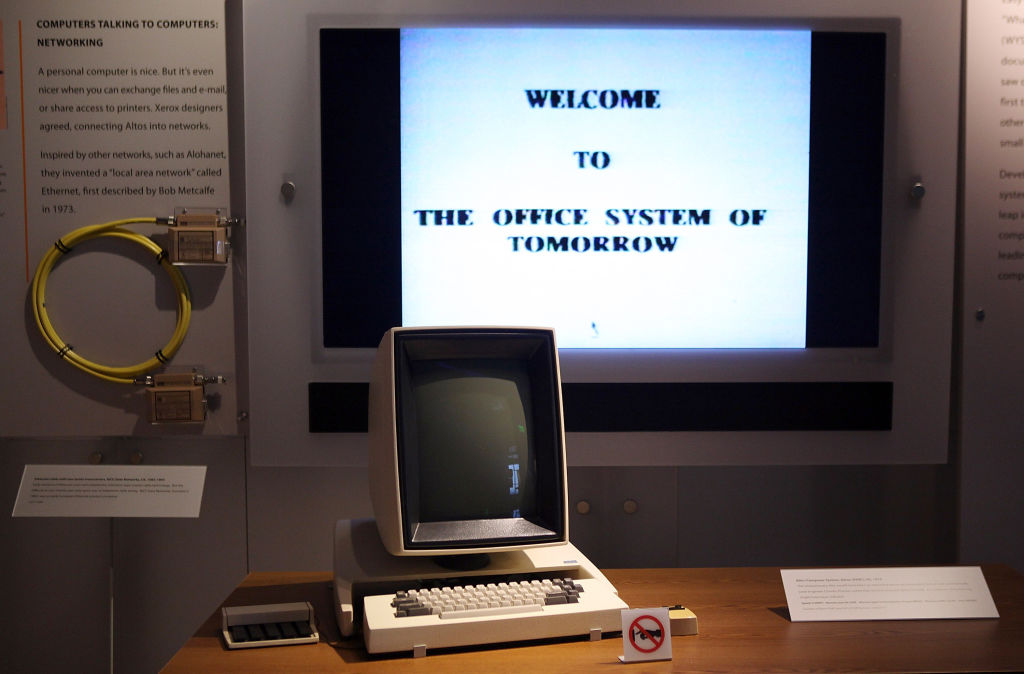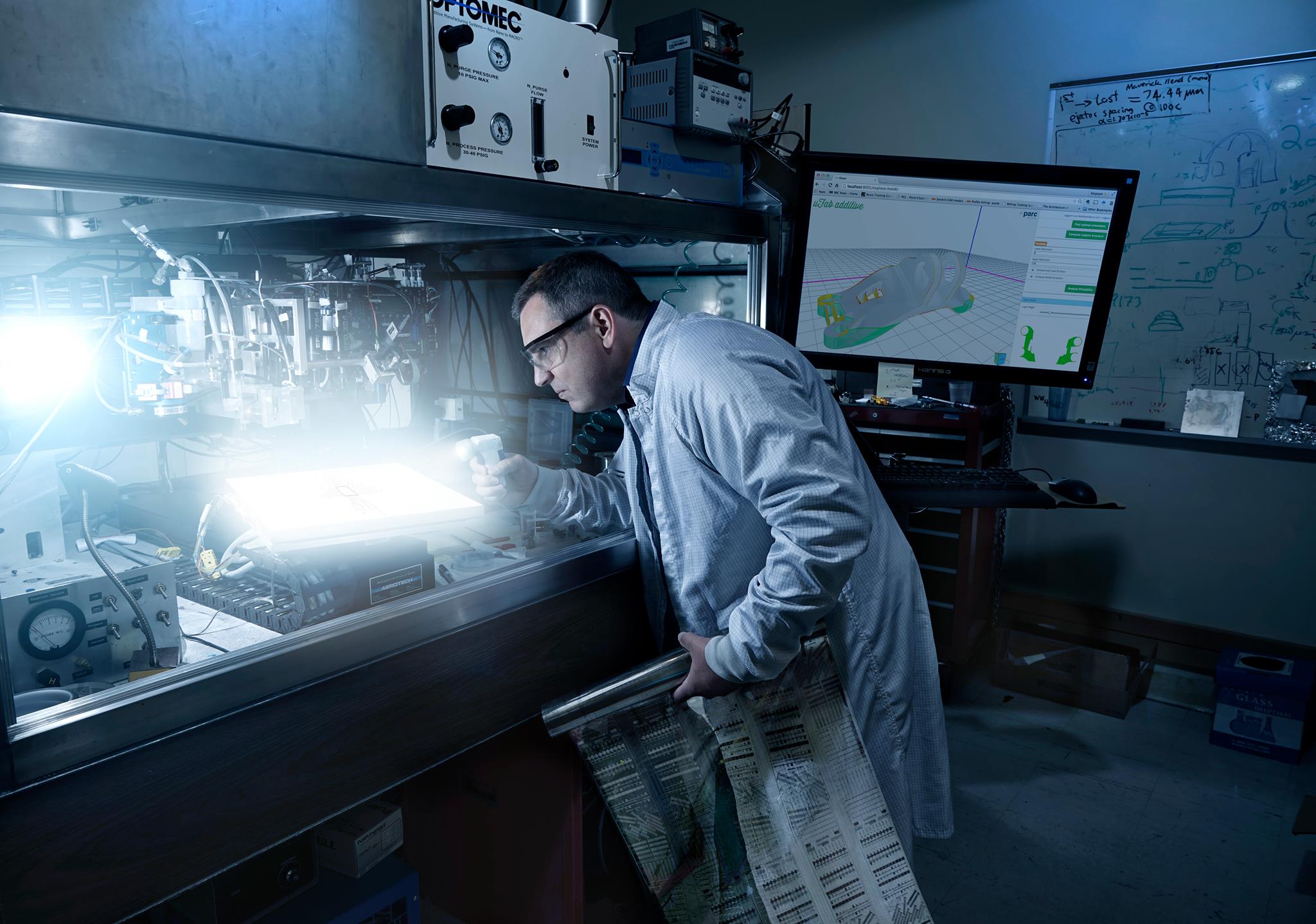
If I was a betting man, I’d wager that you’re reading this article from home. Why? Because, in the age of COVID-19, home is where just about everyone is these days. The fact that you’re reading this article in the way that you are, however, owes more than a passing debt to a Silicon Valley research laboratory called Xerox PARC, an abbreviation for Palo Alto Research Center.
Turning 50 years old this year, PARC changed the way that we use computers on a profound level. Far outstripping its remit as the research and development wing over the Xerox Corporation, it was to computing what Neils Bohr’s institute at Copenhagen was for quantum physics in the 1920s or Motown Records was for soul music in the 1960s.
Throughout its history, PARC introduced one breathtaking new technology after the other. It pioneered laser printing, allowing people to turn digital documents into physical ones. It introduced the world to object-oriented programming. It proposed the concept of Ethernet networks to create local computer networks. It built one of the first portable computers in the form of the 1978 Xerox NoteTaker. It gave us a WYSIWYG (“What You See Is What You Get”) text editor. Years before the iPhone, it brought us the PARCTab, a palm-sized computer for accessing the internet and reading email. And it helped imagine the graphical user interface and mouse interface that’s now found on just about every computer on the planet.
“PARC has always been about the future,” Tolga Kurtoglu, Head of Global Research at Xerox, told Digital Trends. “We’ve always tried to invent the future. We’ve always been about the next frontier of science and technology, and how it might shape and change the world. That hasn’t really changed.”
After half a century, PARC’s original mission suddenly seems curiously modern again. It was galvanized by an ambition many of us, whether employees or employers, are struggling with right now: Namely, how technology can positively disrupt the way that we work. PARC set out to build the office of the future. And it succeeded in a big way.
Building the future
“PARC had a nearly uniquely broad directive from the home office of Xerox: To create the ‘office of the future,’” Michael Hiltzik, the Pulitzer Prize-winning journalist who wrote the definitive history of Xerox PARC, Dealers of Lightning, told Digital Trends.
In the 1970s, Bob Taylor, the man who ran PARC’s Computer Science Laboratory, dreamed that computers would be more than number-crunching machines; they would eliminate the “drudgery of office work” by giving us, the user, new ways of getting work done on computers. In an early encapsulation of the notion that machines should carry out the “dull, dirty and dangerous” jobs, Taylor believed that computers could free up office works to “attend to higher-level functions so necessary to a human’s estimate of his own worth.”

Under the leadership of folks like Taylor and pioneering computer scientist Bert Sutherland, PARC took up the mission of exploring all the new ways people could interact with machines to enhance their lives — and, crucially, the kind of work they could do on a computer.
“All the original recruits were encouraged to follow their own instincts, so Alan Kay worked on his notion of a personal computer that would serve its users’ creativity, and Chuck Thacker and Butler Lampson worked on the design that would allow that to happen,” Hiltzik continued. “Together they invented the Alto, the first personal computer. Bob Metcalfe followed his interest in networking, so he invented Ethernet. Gary Starkweather continued to develop the laser printer, a device that his supervisors at Xerox headquarters disdained, but at PARC he could keep working on it.”
“We’ve always tried to invent the future. We’ve always been about the next frontier of science and technology, and how it might shape and change the world. That hasn’t really changed.”
There were plenty of other pioneering PARC researchers, too. Remember Larry Tesler, the inventor of computerized cut, copy, and paste, who died earlier this year? He worked at PARC. The research lab, which was known for its freewheeling approach to creative collaboration, was a who’s who of names who helped make computing what it is today.
Here in 2020, we take a lot of what PARC did for granted. It’s become the language of computing, and we don’t stop to think about many of its innovations any more than we think about the grammatical rules we use when formulating ideas. That idea of the “office of the future” is retained, though; even if it’s no longer part of PARC’s manifesto.
The new office
“Office is the physical space where work gets done in the traditional sense,” Kurtoglu said. “That’s why we don’t talk about the office of the future anymore. That was the mission in the formative years of PARC. We talk about the modern work experience. Work can now get done anywhere, anytime, and via a series of different digital devices and capabilities.”
To that end, the PARC of 2020 is a very different place. It’s trying to help define a new set of tools that will make tomorrow’s work easier, as the boundaries that once defined a physical office space crumble into meaninglessness.
Some of these tools are about changing user expectations. Instead of the graphical user interface, for instance, modern users are concerned with the intelligent user interface: Making predictive suggestions based on what the user is likely to want to carry out or even performing tasks without the user having to explicitly oversee them. To that end, PARC is building A.I. workflow assistants which draw on Xerox’s years of expertise in document modeling and natural language processing to create new automated tools.
In the same way that it once focused on making computers approachable to the average person, now it is doing the same with artificial intelligence. “The biggest challenge with deep learning, neural networks, and the fundamental algorithms that underlie modern A.I. technologies is that, essentially, they’re a bunch of neurons connected with some probability distributions assigned,” Kurtoglu said. “But there’s not the ability to map reasoning [onto that.] Explainability is a response to that need to bring transparency into the reasoning that happens by these algorithms.”

With that in mind, PARC today focuses on building explainable A.I. systems, working with DARPA to build artificial intelligence tools that allow human users to scrutinize their behavior. In doing so, it hopes it can increase trust in A.I. systems, alleviate ethical concerns that exist, and allow humans and machines to better collaborate to solve problems.
In recognition of changing manufacturing practices and the ability to carry these out at home (something impossible a half-century ago), it’s also investigating new 3D-printing technologies using materials like liquid metal which can manufacture parts that are denser, faster to make, and cheaper compared to those made with existing metal powders. Finally, it is focused on the Internet of Things and building sensors which can make any environment smarter and more connected.
If the tools which define our current computing paradigms were imagined by PARC engineers up to five decades ago, these are the tools that will make the next five decades work seamlessly.
Open collaboration
Perhaps the biggest change with PARC from half a century ago, however, is its commitment to bringing these creations to market. Xerox PARC is, perhaps most famously, the dream factory visited by Apple’s Steve Jobs in 1979; a trip that, at least according to popular legend, inspired Apple to bring to market the first mainstream computers, the Lisa and the Macintosh, to come with a mouse and graphical interface.
Value comes in two forms: value generation and value capture. PARC never had a problem generating value through the ideas it created and put out into the world. But capturing that value before it flitted away proved altogether more troublesome. It created a future that others profited from.
“That was a big part of the realization on Xerox’s part,” Kurtoglu said. “The collective creativity of the people at PARC was larger than the target and core markets that Xerox was serving at the time. There are [certainly] examples in the past of where we’ve created the value, but haven’t captured that value. That led us to our current open innovation model. It means that we can work with whomever we want so that we can find a viable pathway to bring ideas to market.”
This current “open innovation” model essentially means that, unlike in the past where ideas were intended for Xerox and Xerox only (at least, in theory), today PARC is focused on helping create products with partners. “We always look for market-facing partners where we can take technology to market,” Kurtoglu said.
That collaborative attitude means that PARC is, today, actively working with partners to bring to market the next set of tools to improve the lives and working ability of users everywhere. Here’s to another successful 50 years!
Correction: an earlier version of this story misidentified Tolga Kurtoglu. He is head of Global Research at Xerox.


